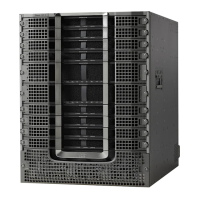•
Sets the load and utilization of both upstream and downstream physical channels through the
docsIfCmtsChannelUtilizationInterval object. This information may be used for capacity planning
and incident analysis, and may be particularly helpful in provisioning high value QoS.
•
Displays information about all service flows (DOCSIS 1.1 service flows only) including multicast service
flow is maintained in the docsQosServiceFlowLogTable in DOCS-QOS-MIB,
docsIetfQosServiceFlowLogTable in DOCS-IETF-QOS-MIB, and docsQos3ServiceFlowLogTable
in DOCS-QOS3-MIB.
To view information about deleted service flows, enable logging of deleted service flows using the cable
sflog global configuration command.
Benefits
The usage-based billing feature provides the following benefits to cable service providers and their partners
and customers:
•
Allows service providers to integrate their billing applications for DOCSIS services with their other
XML-capable billing applications.
•
Standards-based approach that supports existing networks and services, such as DOCSIS and PacketCable,
and is easily extensible to support future services as they are supported on the Cisco CMTS.
How to Configure the Usage-based Billing Feature
This section describes the following tasks that are required to implement the Usage-based Billing feature:
Enabling Usage-based Billing Feature File Mode Using CLI Commands
This section describes how to enable and configure the Usage-based Billing feature so that it operates in file
mode, where it writes the billing record files to a local file system. The billing application must then log into
the Cisco CMTS and retrieve the billing record files on a regular basis.
DETAILED STEPS
PurposeCommand or Action
Enables privileged EXEC mode. Enter your password if
prompted.
enable
Example:
Router> enable
Step 1
Example:
Router#
Cisco cBR Series Converged Broadband Routers Troubleshooting and Network Management Configuration Guide
for Cisco IOS XE Fuji 16.8.x
135
Usage-Based Billing (SAMIS)
Benefits

